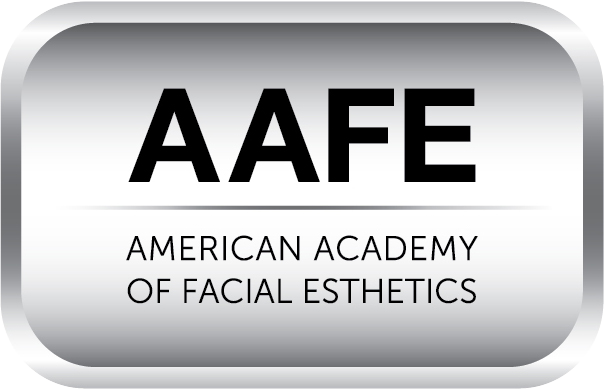Common Treatments Used in Adult Orthodontics

Adult orthodontics has become an increasingly popular solution for individuals looking to improve their oral health and the smile's appearance. Dental professionals offer a variety of treatment options to address the unique needs of adult patients. The following guide will explore the most common treatments used in adult orthodontics, highlighting their benefits and effectiveness in achieving optimal results.
Adult orthodontics treatment options
Traditional metal braces
Traditional metal braces are common in adult orthodontics due to their effectiveness in correcting complex dental issues. These braces are metal brackets affixed to the teeth and connected by archwires. Periodic adjustments ensure steady progress toward proper alignment. Despite their visibility, modern metal braces are smaller and more comfortable than the metal frames and brackets used in the past, making them a viable choice for adults with significant alignment issues.
Ceramic braces
Ceramic braces offer a more discreet alternative to traditional metal braces. These braces utilize tooth-colored or clear brackets that blend with natural teeth, making them less noticeable. While ceramic braces are similar in function to metal braces, they are often favorable to adults concerned about the visibility of the brackets and wires. However, they often require more diligent cleaning to prevent staining and may not be as durable as their metal counterparts.
Lingual braces
Lingual braces offer another discreet option for adults seeking orthodontic treatment. These braces are similar to traditional metal braces but are placed on the inner surfaces of the teeth, making them invisible from the front. Lingual braces are effective for a range of alignment issues and are customized to each patient's unique needs. However, these braces often require an adjustment period as patients adapt to them and the potential effects on their speech patterns.
Clear aligners
Clear aligners provide a virtually invisible treatment option for those looking to undergo orthodontic treatment without the visibility of traditional metal braces. These custom-made, removable trays gradually shift teeth into their desired positions. Clear aligners are particularly appealing to adults due to their convenience. Patients can remove them for eating, brushing, and flossing. Clear aligners are typically common for mild to moderate alignment issues. However, patients need to be committed to wearing them as prescribed — 20 to 22 hours — for successful treatment outcomes.
Accelerated orthodontics treatment
For adults seeking quicker results, accelerated orthodontics (AO) may be an option. This approach combines traditional orthodontic treatments with procedures designed to speed up tooth movement. Techniques such as photobiomodulation, micro-vibration, and soft tissue treatments can help reduce treatment time.
However, those with more severe cases of misalignment may not be able to undergo this type of treatment. The dentist or orthodontist will evaluate each patient's case to determine whether accelerated orthodontics is a suitable choice for their unique needs and goals. It is also important to note that AO is typically more expensive, as most dental insurance policies do not cover it.
Surgical orthodontics
For patients with severe jaw irregularities or misalignments, surgical orthodontics may be necessary. This treatment combines orthodontic care with oral surgery to correct complex issues that are not treatable with braces or aligners alone. Surgical orthodontics can help address difficulties with chewing, speaking, or breathing due to structural issues in the jaw.
Choosing the right treatment
Selecting the appropriate treatment in adult orthodontics involves a thorough evaluation by a qualified orthodontist. A patient's treatment option will depend on the following factors:
- Severity of alignment issues
- Age-related concerns
- Presence of previous dental restorations
- Missing or damaged teeth
- Untreated oral health issues
- Lifestyle habits and preferences
Factors such as the severity of alignment issues, lifestyle preferences, and treatment goals are considered during the consultation process. Orthodontists provide personalized recommendations to help patients make informed decisions about their care.
Adult orthodontics aftercare
After adult orthodontics treatment is complete, it is important for patients to follow a robust aftercare structure to maintain their results and protect their time and investment. Dental professionals often recommend regular dental check-ups, good oral hygiene practices, and consistent retainer use.
Retainers are oral appliances that help patients maintain the results of their adult orthodontic treatment. Fixed and removable retainers are commonly used in adult orthodontics to prevent teeth from shifting back to their original positions. This is also known as retainer relapse. In many cases, patients may need to wear a retainer for the rest of their lives to preserve their results or as a standalone treatment for minor adjustments.
Find a treatment option that works for you
Adult orthodontics offers a variety of effective treatments tailored to meet the unique needs of adult patients. Are you ready to find the right option for your needs? Call Dr. Call Dental Center at our Dalton office to learn more or to schedule a consultation.
Request an appointment here: https://drcalldental.com or call Dr. Call Dental Center at (706) 425-6240 for an appointment in our Dalton office.
Check out what others are saying about our dental services on Yelp: Orthodontics in Dalton, GA.
Related Posts
Many people think it is a normal part of an oral care routine, but dentists warn that bleeding gums are a sign something is wrong. When you brush and floss your teeth, sometimes you may see a little blood coming from your gums. In most cases, bleeding gums are a sign that you may have…
Dental bridges can replace missing teeth effectively and often without needing surgery. Not only will this restore the smile, but it also helps patients avoid the negative oral health effects of missing teeth. A general dentist can determine whether a patient is a good candidate for bridges in a consultation. However, learning the basics can…
There are many reasons why bleeding gums may occur. If it only happens once in a while, it is typically not cause for concern. Gums can bleed because of brushing or flossing that is overly vigorous. If bleeding is an ongoing occurrence, however, there may be an underlying medical or dental condition causing it. The…
Patients do not have to accept bleeding gums as part of routine oral health maintenance as this condition can lead to more advanced forms of gum disease. It can easily be treated with specialized products in the early stages. These patients should visit a dentist as soon as possible after noticing gum inflammation or bleeding…


